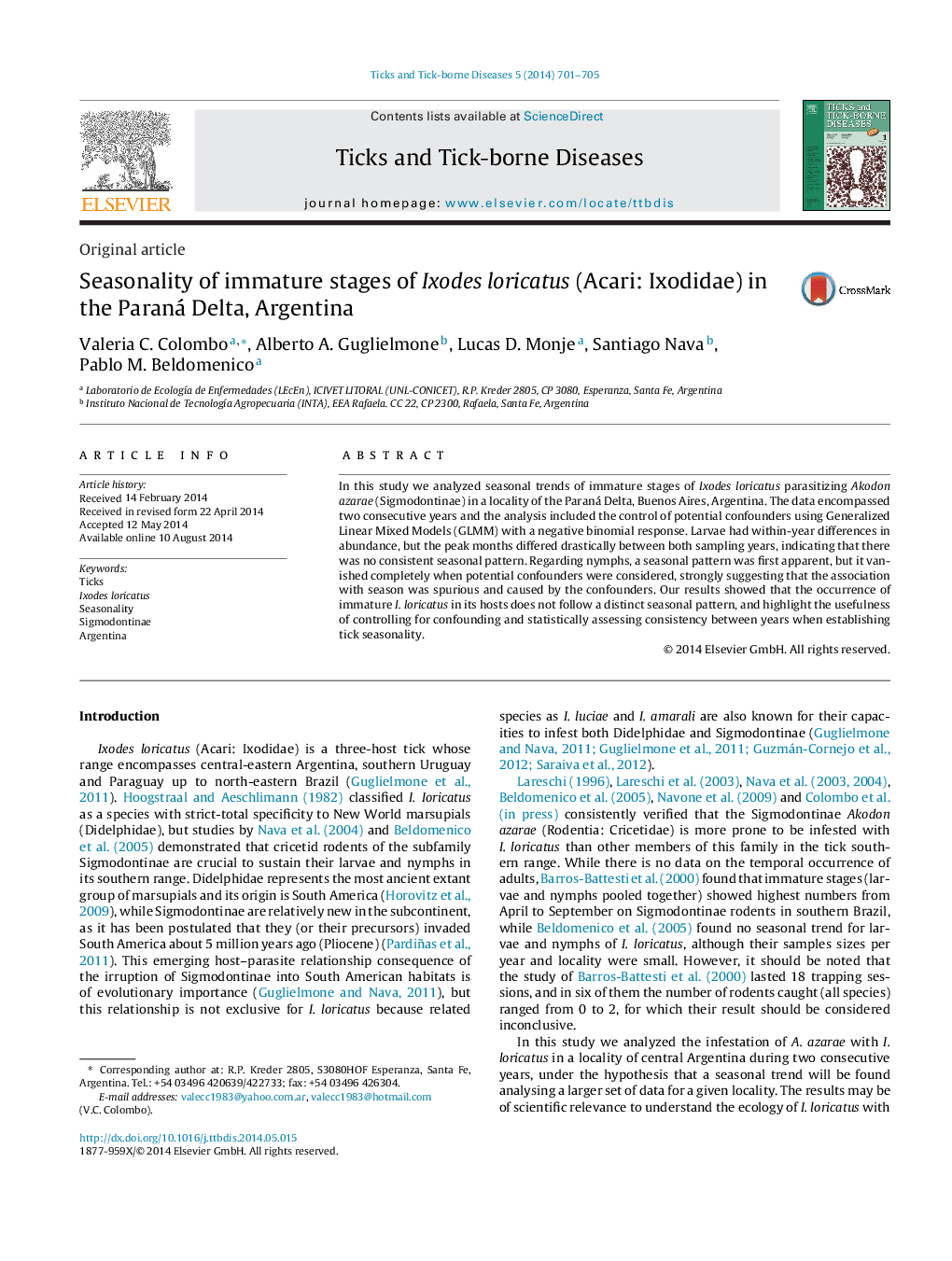| Article ID | Journal | Published Year | Pages | File Type |
|---|---|---|---|---|
| 2473975 | Ticks and Tick-borne Diseases | 2014 | 5 Pages |
In this study we analyzed seasonal trends of immature stages of Ixodes loricatus parasitizing Akodon azarae (Sigmodontinae) in a locality of the Paraná Delta, Buenos Aires, Argentina. The data encompassed two consecutive years and the analysis included the control of potential confounders using Generalized Linear Mixed Models (GLMM) with a negative binomial response. Larvae had within-year differences in abundance, but the peak months differed drastically between both sampling years, indicating that there was no consistent seasonal pattern. Regarding nymphs, a seasonal pattern was first apparent, but it vanished completely when potential confounders were considered, strongly suggesting that the association with season was spurious and caused by the confounders. Our results showed that the occurrence of immature I. loricatus in its hosts does not follow a distinct seasonal pattern, and highlight the usefulness of controlling for confounding and statistically assessing consistency between years when establishing tick seasonality.
